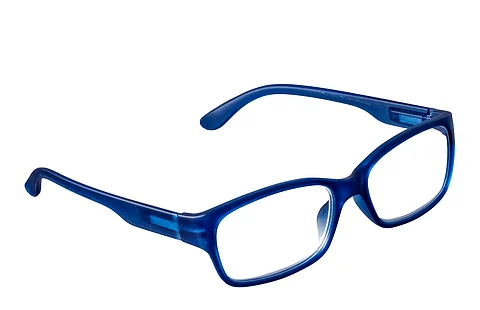

ISTOCK
Have you ever seen someone push up their glasses while reading or doing homework and wondered what life would be like without them? Even if you don’t wear glasses yourself, it’s hard to imagine a world where people with blurry vision had no way to see clearly. But for most of history, that’s exactly how it was. Like many everyday objects, spectacles have a surprisingly fascinating story.
The very first spectacles appeared more than 700 years ago in Italy. Monks who spent their days copying manuscripts by hand found it hard to see tiny letters as they grew older. They used simple convex lenses—basically round pieces of glass—to make the text look bigger. These early glasses didn’t have arms. Instead, they were perched on the nose or held up by hand, which must have been pretty annoying.
By the 15th century, when books became more common thanks to the printing press, spectacles spread across Europe. People experimented with different shapes and frames, often made of wood, bone, or metal. Back then, glasses were only for reading—there were no lenses for people who couldn’t see far away. If you were short-sighted, tough luck!
It wasn’t until the 1700s that glasses began to look more like what we wear today. Arms with little loops at the ends were added so they could hook over the ears. And in the 1780s, American inventor Benjamin Franklin created bifocals—lenses with two sections, one for near vision and one for distance. He was tired of switching between two pairs of glasses and decided to combine them into one.
Spectacles became more stylish over time. In the 19th century, wealthy people carried elegant monocles or pince-nez—frames that pinched the nose. Soon, glasses were no longer just practical but also a sign of fashion or intelligence. In the 20th century, mass production made them affordable for everyone. Plastic frames and lighter materials turned them into everyday accessories rather than clunky tools.
Today, glasses are everywhere—used for reading, distance vision, sunglasses, and even blue-light protection from screens. Some lenses can change colour in sunlight, while others are so thin and light you barely feel them. And if you’ve ever tried on a funky frame just for fun, you know spectacles can be as much about style as about seeing clearly.
What started as simple glass circles for monks has become a mix of science, fashion, and personality—proof that even the most ordinary things can have a fascinating past.
In the 19th century, wealthy men liked to wear a single round lens—called a monocle—over one eye to look stylish and intellectual.
Special goggles called “doggles” protect dogs’ eyes from bright sunlight, dust, and wind—especially if they love sticking their heads out of car windows. Some vets even make prescription lenses for dogs with vision problems!
Hundreds of years ago, Chinese judges wore dark lenses made of smoky quartz—not to protect from the sun, but to hide their facial expressions in court.
Astronauts on the International Space Station use specially designed glasses that won’t float off in microgravity.
Early glasses were just two lenses held together and perched on the nose. People had to balance them carefully or hold them with their hands!